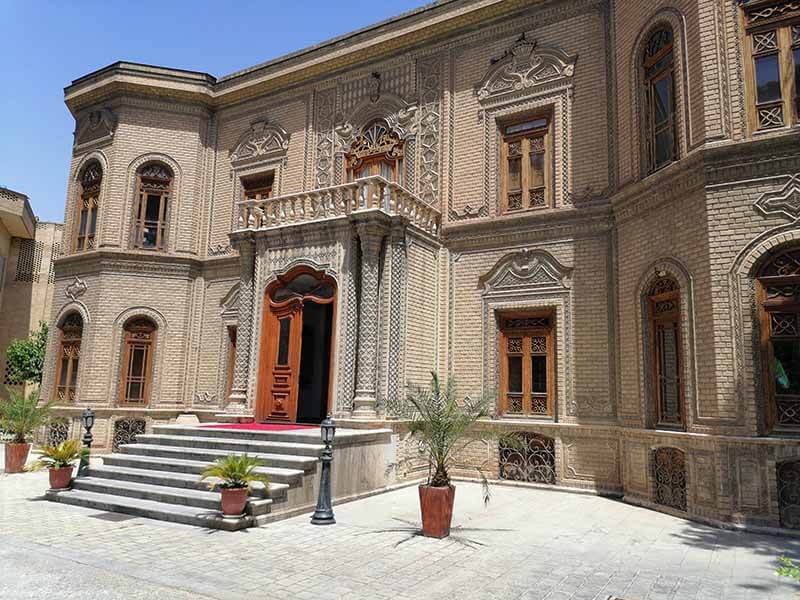
Abgineh Museum (Glass & Pottery Museum)
This building is a historical house related to the Qajar period and it is based on, 30 Tir Street. This Museum was registered as one of the national works of Iran on May 27, 1998. Abgineh Museum houses unique historical collections of pottery and glass works of Iran.
This museum is one of the most visited museums in Tehran and most of its visitors is foreigners. On average, more than 2 million people visit the museum each year.
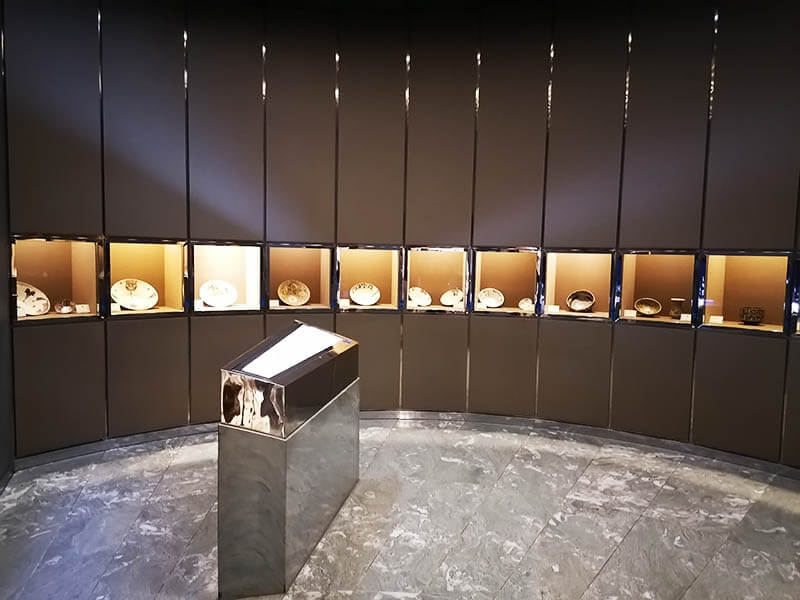
History
History
From 1921 to 1951, this complex was the home and workplace of Qawam al-Saltanah, the minister of Ahmad Shah of the Qajar dynasty. After that it was given to the Egyptian embassy for seven years. Then, it became the location of the Afghan embassy and the commercial bank of Iran.
Finally, in 1976, Farah Pahlavi’s office bought the Qajar mansion to set up a museum with the cooperation of Iranian and Austrian engineers. Its renovation and improvement began.
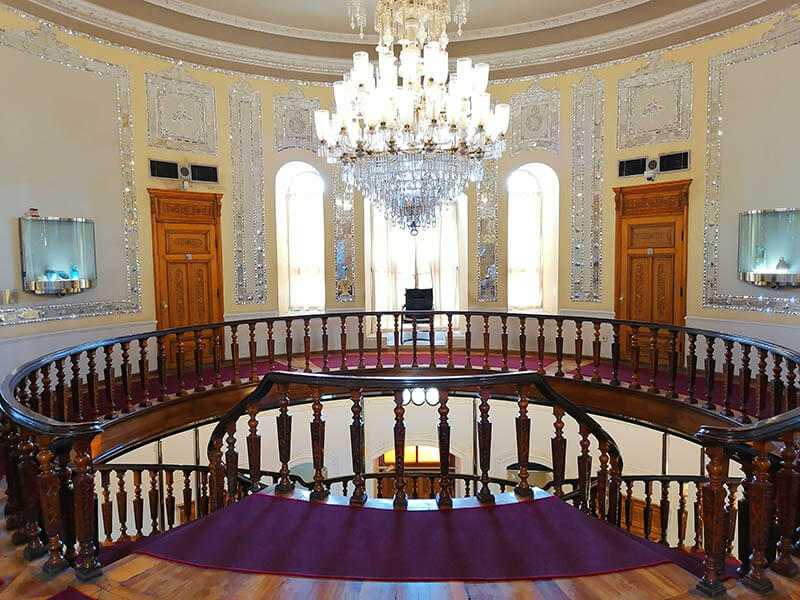
The design of the building was given to Iranian engineers and the design of the showcases and interior architecture was entrusted to Hans Hollein, a prominent Austrian architect.
In designing the Glass Museum, Hollein was inspired by prominent Iranian historical monuments such as Thatcher’s Palace, Persepolis Columns, Safavid Arches and the Kaaba of Zoroaster. And although the museum’s showcases and overall space are designed in a modern way, this modern design does not damage the overall space of the building and is in perfect harmony with it.
The museum building is octagonal and is located in a 7,000-square-meter garden. The well-preserved exquisite door and window designs are reminiscent of Seljuk architecture.
The building is built on two floors and has five halls. The first and second halls are on the first floor and the other halls are on the upper floor. This house is based on a mixture of Iranian and European architecture. The staircase is designed in Russian style, but the art of Iranian architecture can be seen in the inlays of the doors and stairs, the bedding of the ceilings and columns, and in its mirror work.
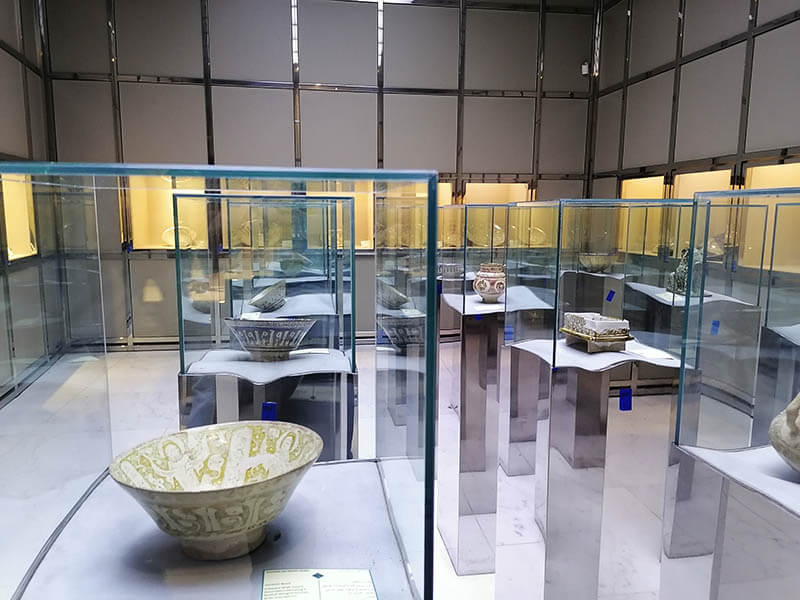
The glass works on display in this gallery are very old, especially decorative items and perfume bottles dating back to the first and second millennia BC. The collection of pottery, which includes examples of simple vases from prehistoric times and flower pots with geometric designs, are on display here. These pots date back to the fourth and the first centuries of the first millennium BC.
The glass pipes that were excavated in the second millennium BC at Iran’s largest temple, Choghaznibal are shown here. They were used in windows and religious ceremonies. These glass tubes, were decorated with different colors, and showed a colorful effect in front of the sunlight.
In the crystal gallery you will see examples of glass artifacts dating back to the first millennium BC, most of which are from the Achaemenid dynasty, Sassanid dynasty, and the early Islamic period. These works have been exhibited in chronological order to show the evolution of glass industry in Iran.
During the Sassanid period, the glass cutting technique reached its peak to the point that it was exported all over the world. It was at this time that other methods of making glassware, such as stamping, adding decorations, and blowing were added to glass works.
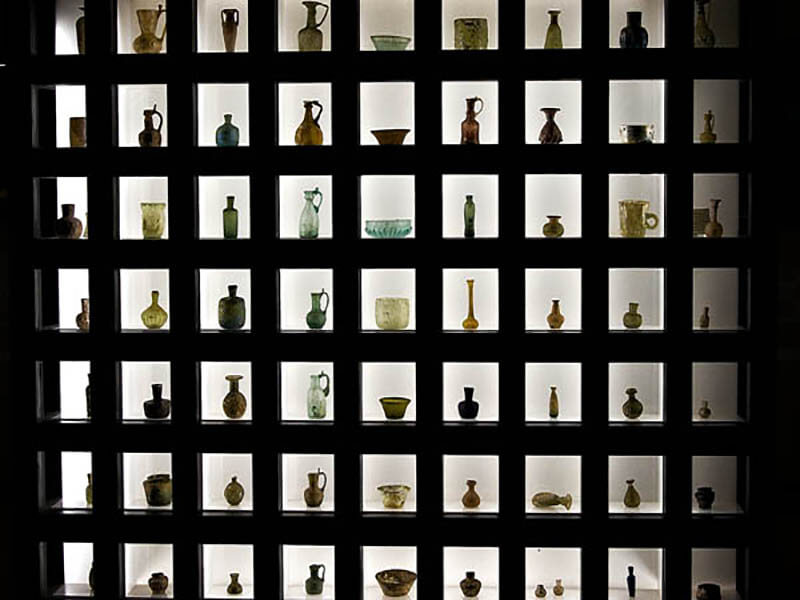
The pottery with stone inscriptions and glass works which were mostly used for decoration, belonging to the early days of the Islamic period are displayed in this hall. The city of Neishabour was one of the most important cultural centers of pottery and calligraphy in that period.
Prominent changes in this period were made in glass works and new methods were used for deep cutting glass. In the fourth century painting on glass became one of the most common forms of glassmaking. This gallery is named for its semi-open shell design and architecture.
Pottery with inscriptions have been displayed in this hall from the 4th to the 7th centuries AH. The works in this section are mostly made of gold, azure and turquoise. The dishes are decorated with writings such as prayers, poetry or miniatures.
In addition to the usual decorations, Mongolian figures can also be seen on a number of dishes, which differ depending on the city of origin. The golden gallery gets its name from the golden dishes on display which date back to the Seljuk period.
This gallery has two parts:
Part one: The pottery in this gallery is decorated with turquoise colors and it dates back to the sixth or seventh century AH. The production of glassware with turquoise glazes became popular in the city of Gorgan in the sixth century AH. Most of the works are decorated either with engravings or with black paintings. Exceptional vases, known as double-layered vases, are also seen in this hall. In addition, Azure gallery naming is due to the blue and turquoise glazes of the seventh and eighth centuries.
Part two: Examples of glass works dating back to the eleventh to thirteenth centuries AH are on display at the Lajevard II gallery. During the Safavid period, Shah Abbas Safavid invited a large number of glass masters from Venice to Iran to teach their art to Iranian masters.
A pottery plate with seven glazed colors belongs to the Qajar period and a picture of Ferdowsi’s Shahnameh is shown in this hall.
